
Beyond the Classic Endocrine Glands (Physiology)
Beyond the classic endocrine glands - Dr Peter Skorupski Session summary This session will provide an overview of endocrine signalling by tissues not classically established as endocrine glands. Adipose tissue, for example, previously regarded as a passive energy store, has been revealed to be an important endocrine organ, with widespread effects on energy balance metabolism. Learning outcomes At the end of this session you will be able to: Explain why fat is considered to be a (non-classical) endocrine organ Identify the hormones from fat and the gut that control appetite and energy balance Describe the circadian control of melatonin secretion from the pineal gland
-
How do adipocytes store energy?
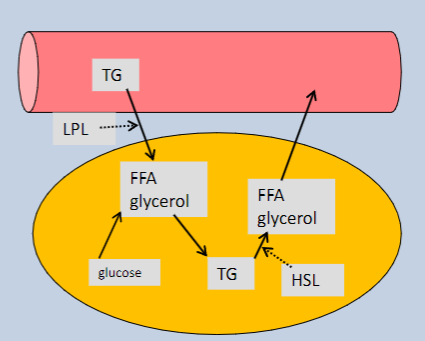
Adipocytes store energy as triglycerides (TG).
-
How do adipocytes release energy?
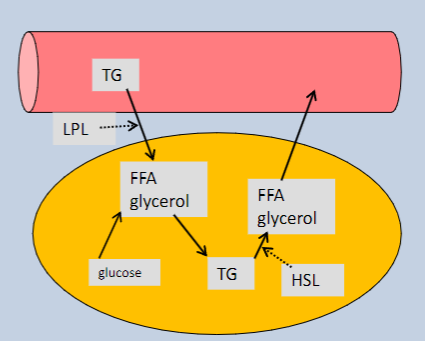
Adipocytes release energy as free fatty acids (FFA).
-
What is the function of Lipoprotein Lipase (LPL) in adipocytes?
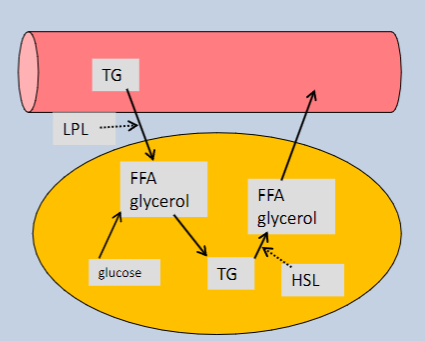
LPL is involved in triglyceride hydrolysis (lipolysis) and receptor-mediated lipoprotein uptake.
-
What is the role of Hormone-Sensitive Lipase (HSL) in adipocytes?
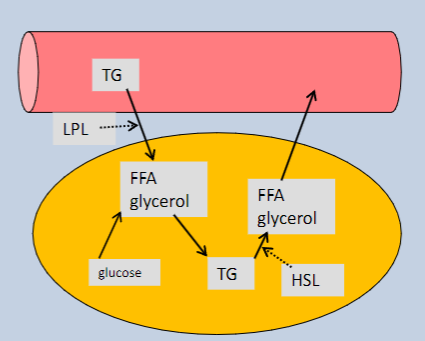
HSL hydrolyzes stored triglycerides into free fatty acids for energy use when needed.
-
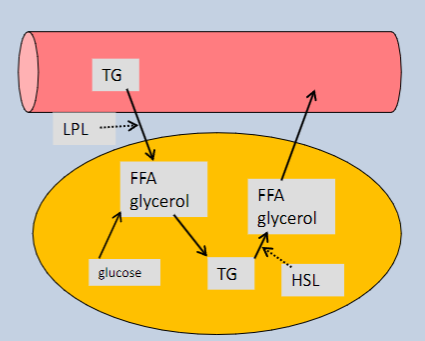
What happens to triglycerides when energy is needed in adipocytes?
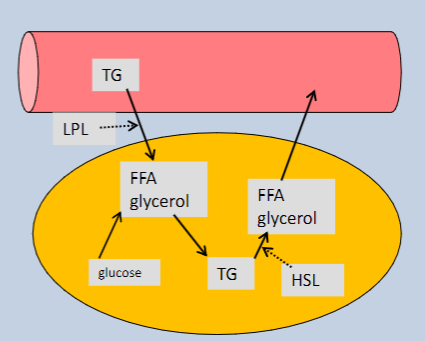
Triglycerides (TG) are hydrolyzed by Hormone-Sensitive Lipase (HSL) to release free fatty acids (FFA) for energy use.
-
What process is LPL involved in?
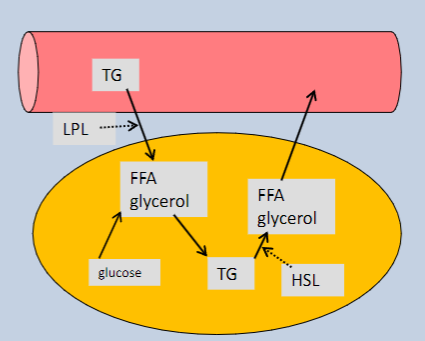
LPL is involved in triglyceride hydrolysis (lipolysis).
-
What happens during triglyceride hydrolysis in adipocytes?
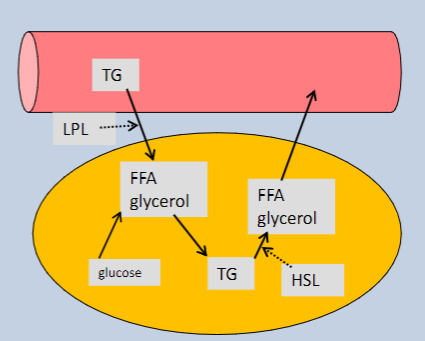
Triglycerides are broken down into free fatty acids.
-
Picture demonstrating the role of fat as an endocrine gland:
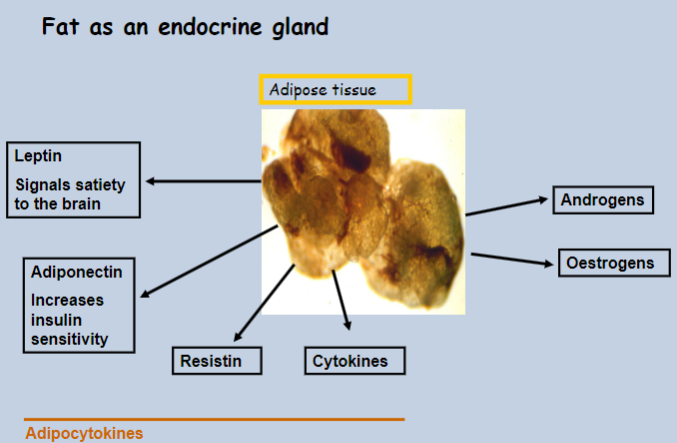
-
What are the effects of mutations in the leptin (LEP) gene or leptin receptor (LEPR) gene?
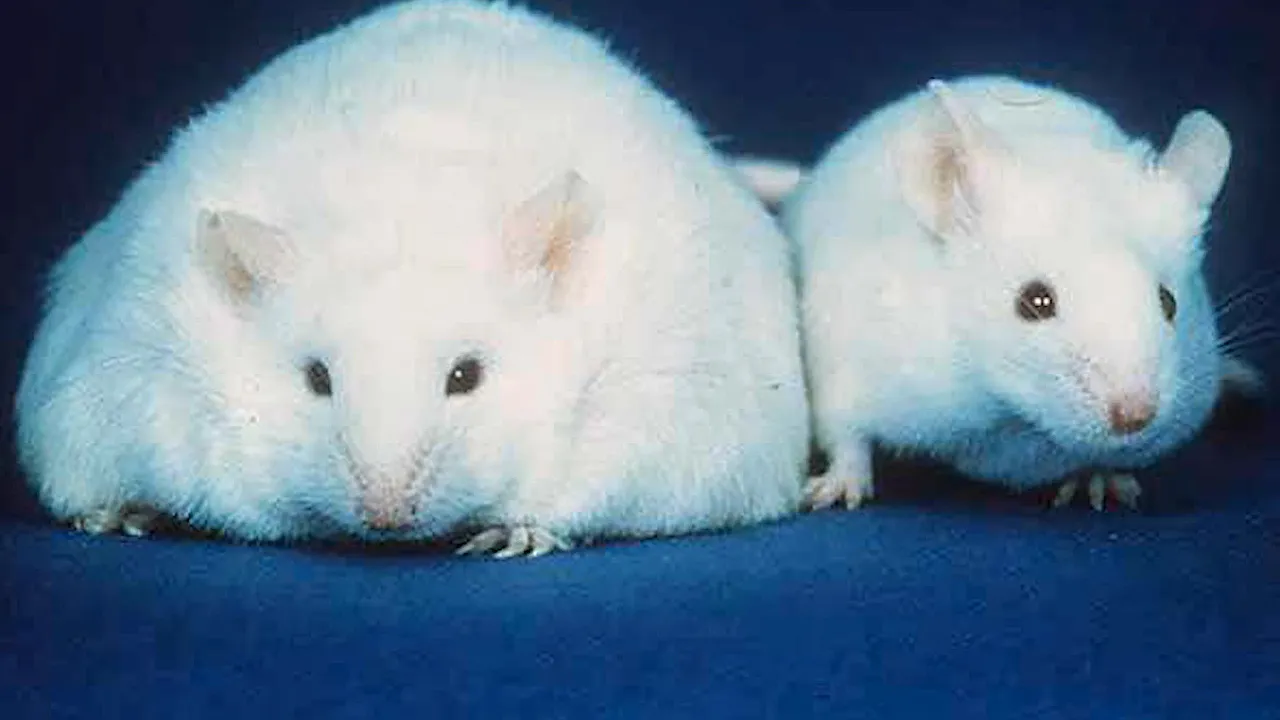
Mutations lead to abnormal eating behaviour and the development of early-onset morbid obesity.
-
How is leptin deficiency treated?
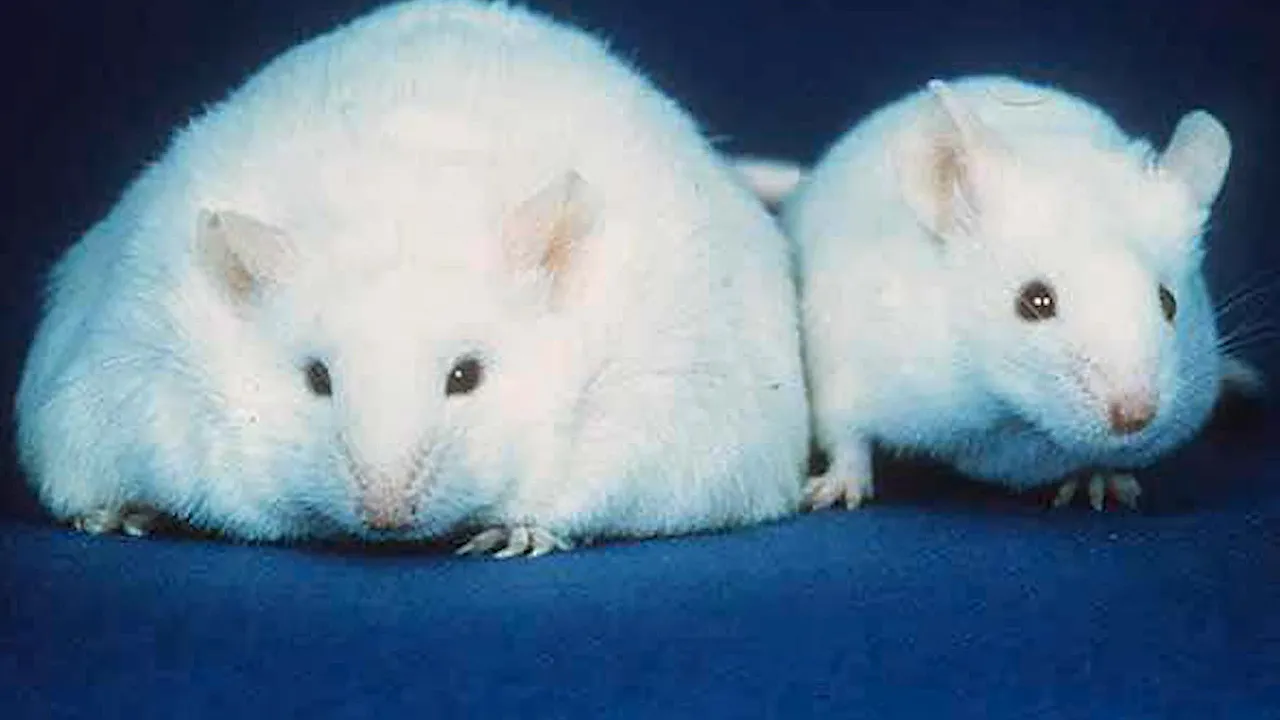
Leptin deficiency has been successfully treated with leptin, resulting in a reduction in fat mass.
-
How common are LEP mutations, and how effective is leptin treatment?
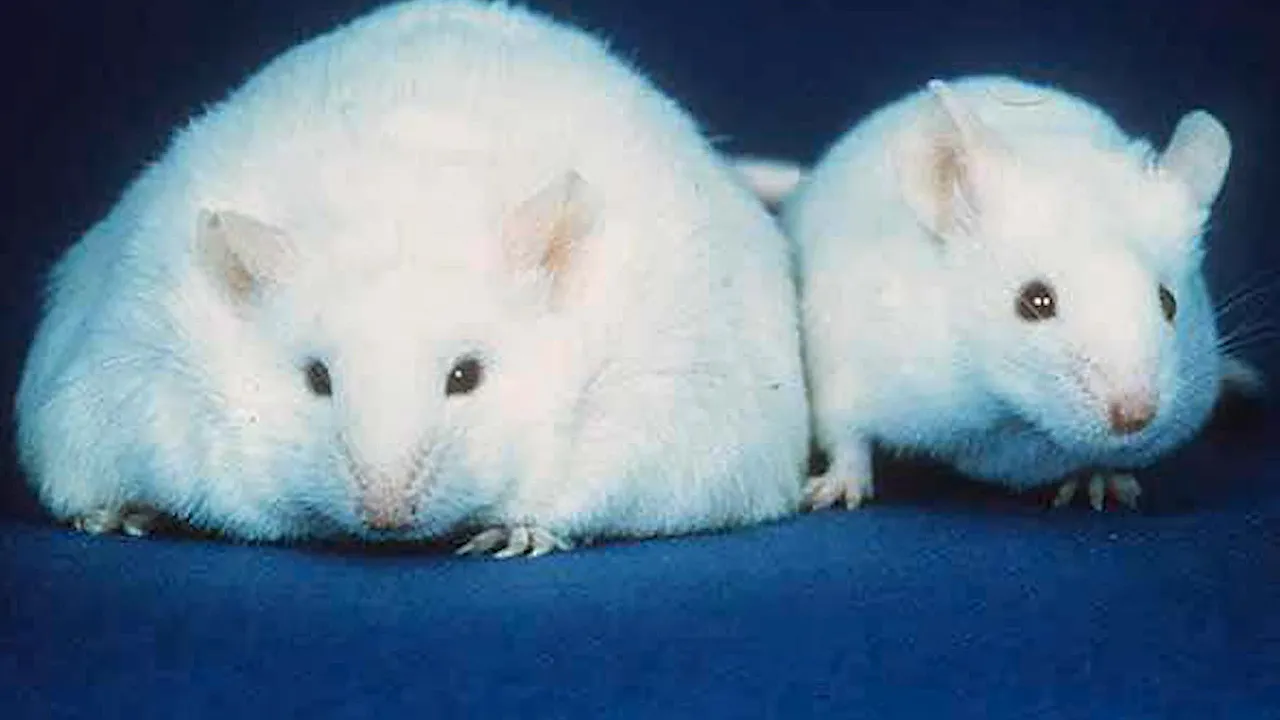
LEP mutations are very rare, and leptin treatment is only rarely effective.
-
What is the relationship between obesity and leptin levels?
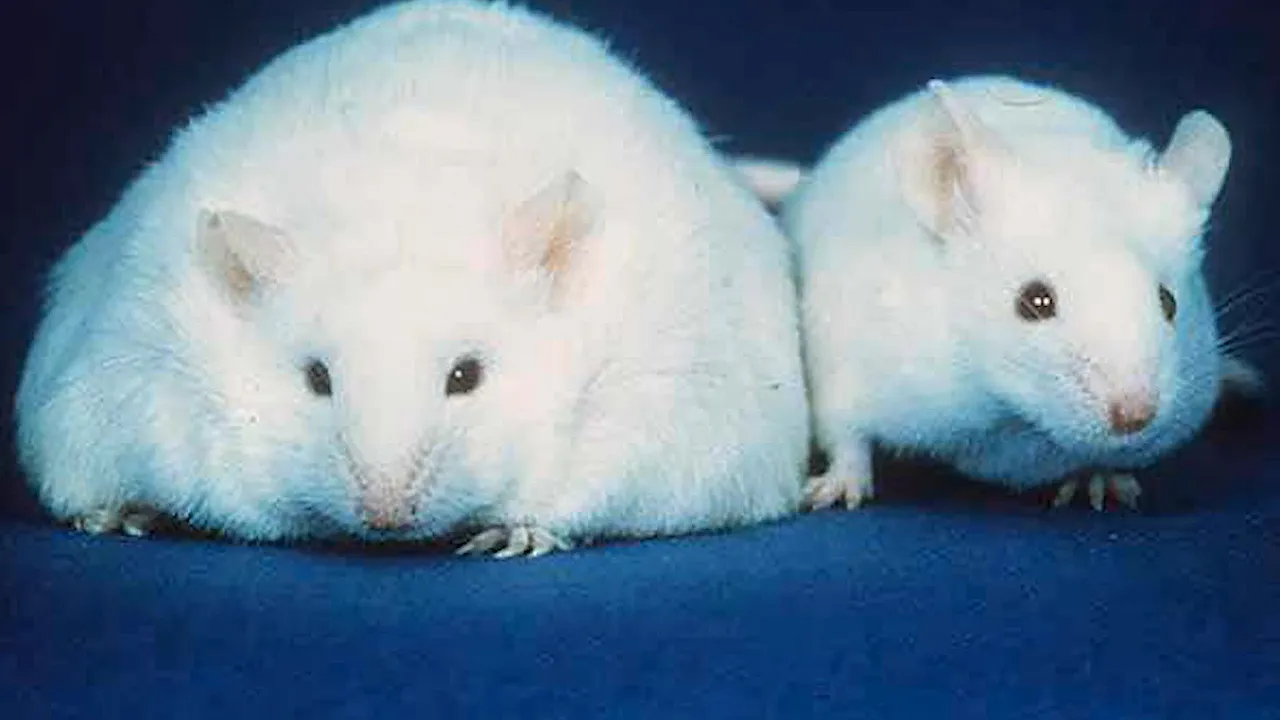
Obesity is associated with leptin resistance, where leptin levels are already high.
-
What controls food intake and energy utilization?
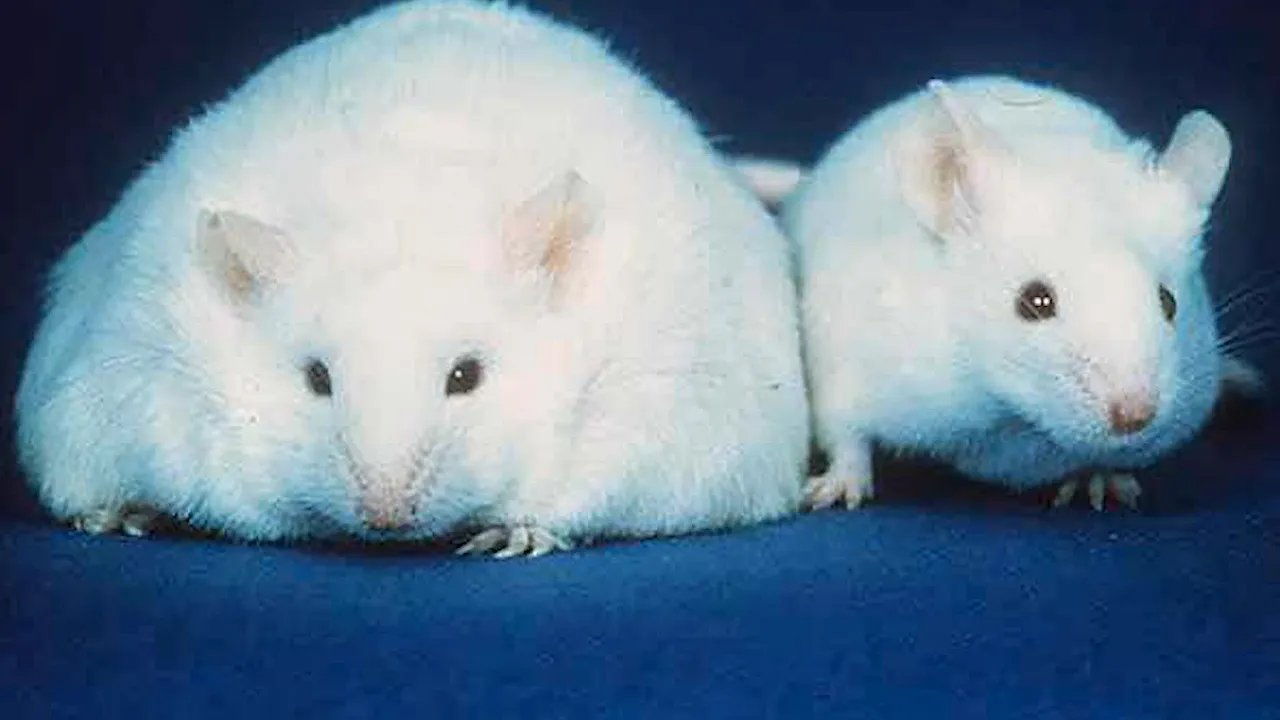
Multiple interacting pathways control food intake and energy utilization.
-
What happens in leptin resistance?
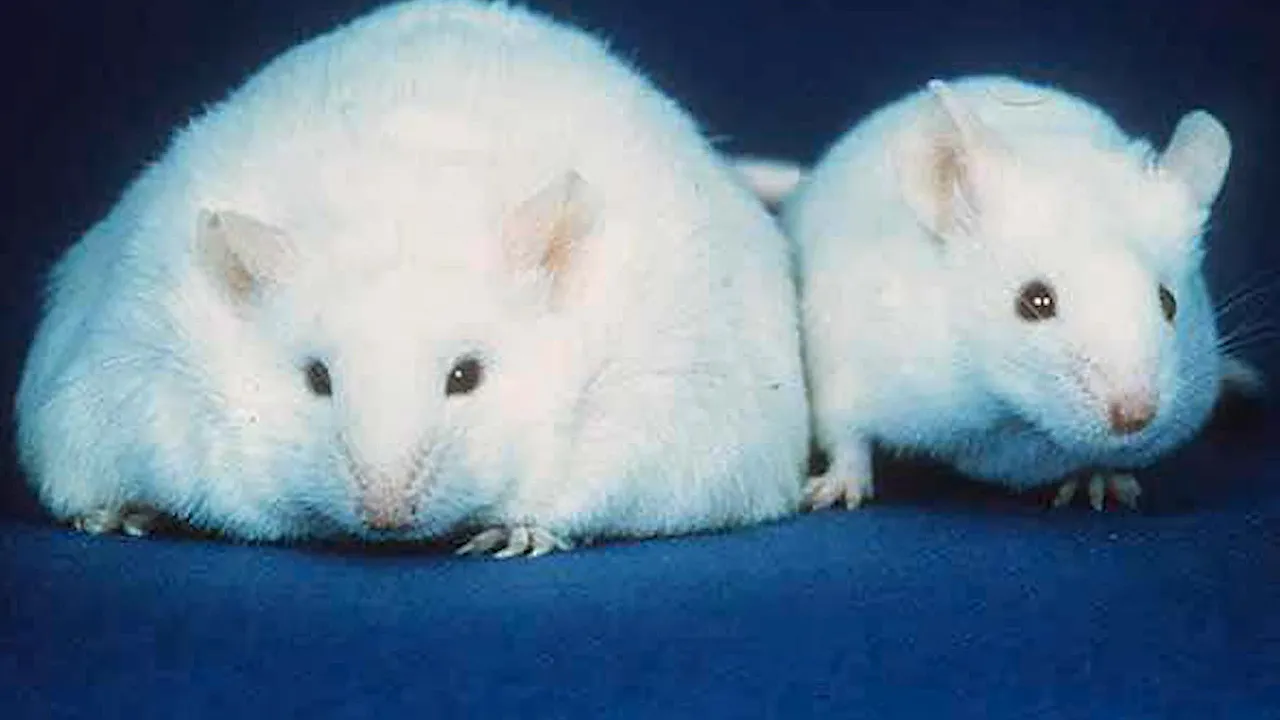
Despite high leptin levels, the body does not respond effectively to leptin, contributing to obesity.
-
How is obesity regarded in terms of inflammation?
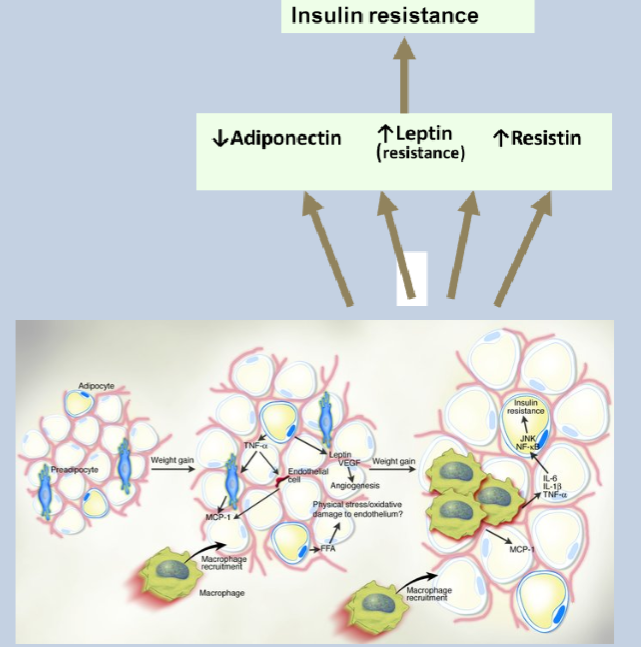
Obesity is regarded as a state of chronic, low-level inflammation.
-
What is the role of leptin in healthy adipose tissue?
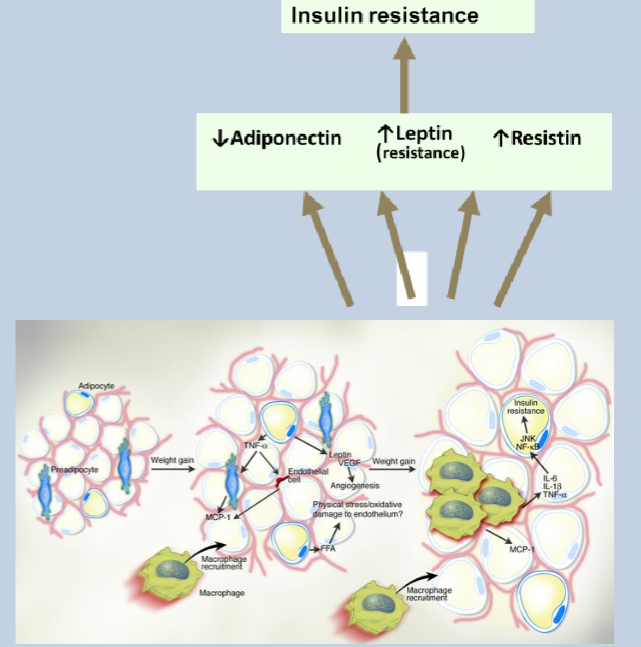
Leptin signals satiety to the brain.
-
What does adiponectin do in healthy adipose tissue?
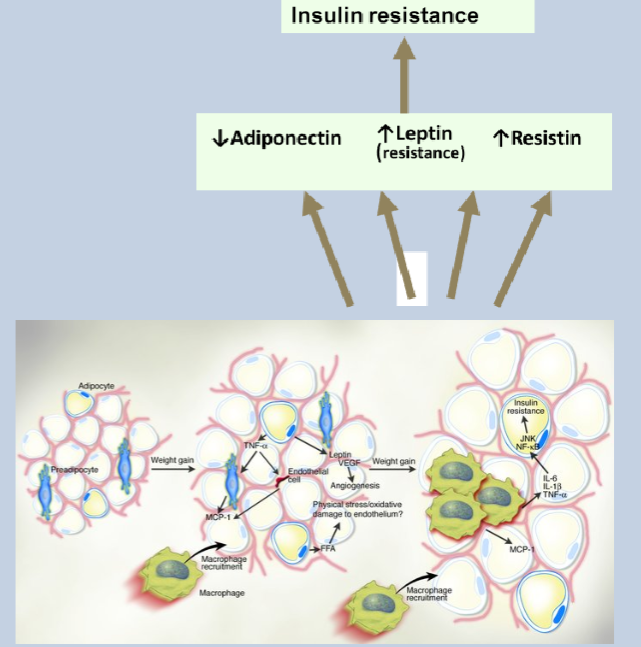
Adiponectin increases insulin sensitivity.
-
What are the resistin levels in healthy adipose tissue?
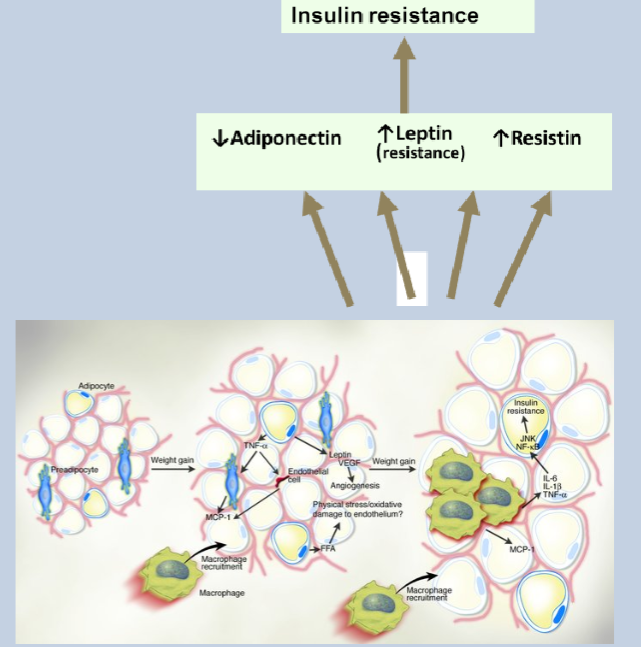
Resistin levels are low.
-
How is leptin secretion and response affected in obesity?
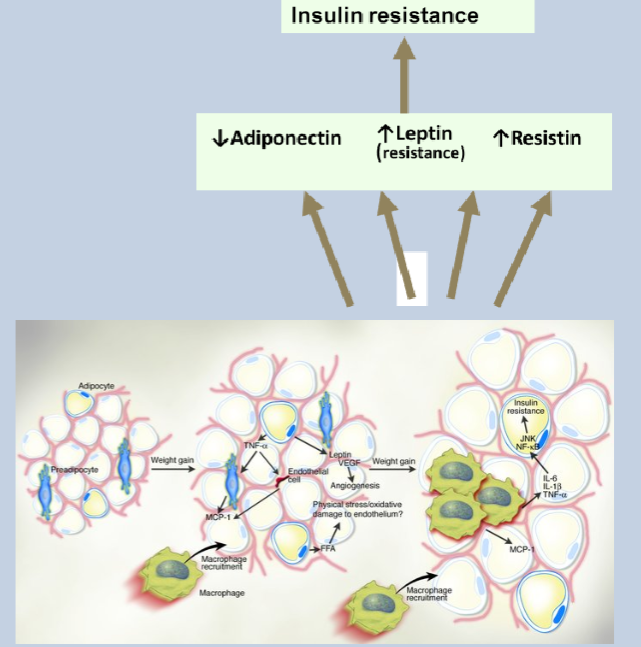
Leptin secretion is high, but there is resistance to leptin.
-
How is adiponectin secretion affected in obesity?
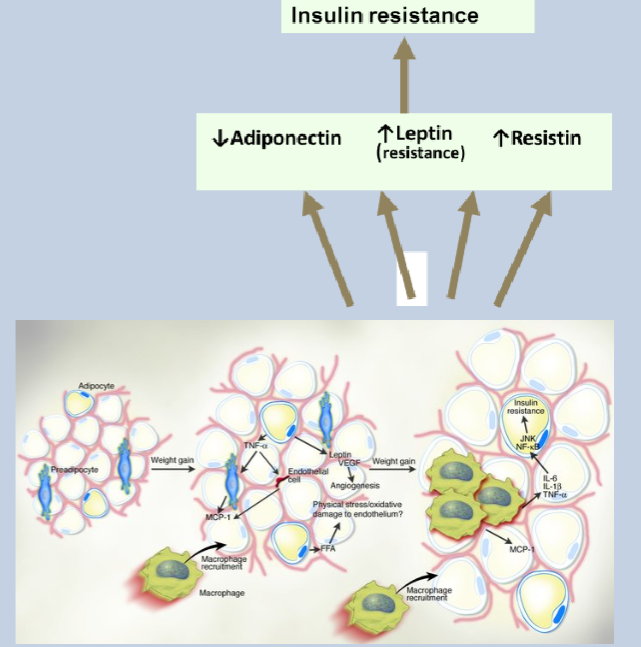
Adiponectin secretion is low.
-
What metabolic conditions are associated with obesity?
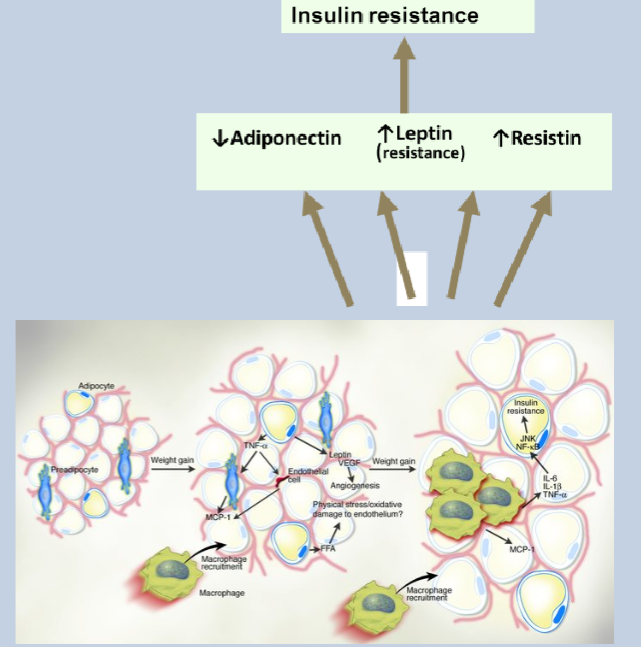
Insulin resistance, diabetes, and metabolic syndrome.
-
Which cytokines are involved in the disturbed balance in obesity?
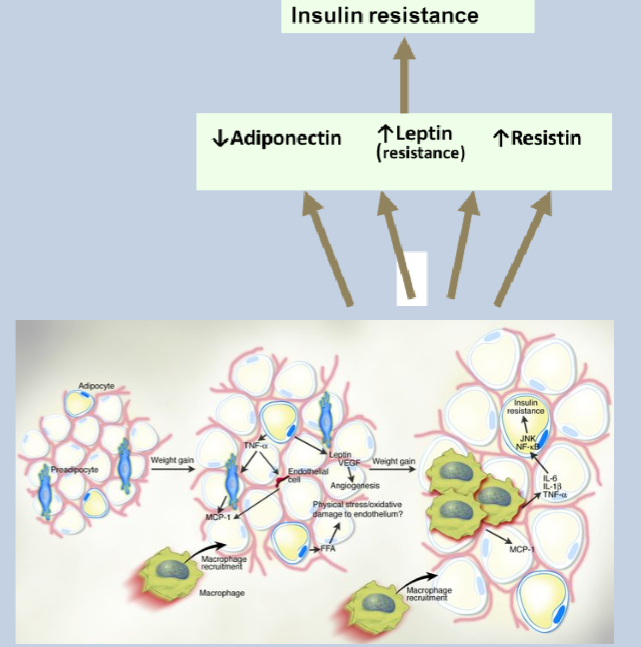
Cytokines such as IL-6 and TNF-α.
-
What role do chemokines play in obesity?
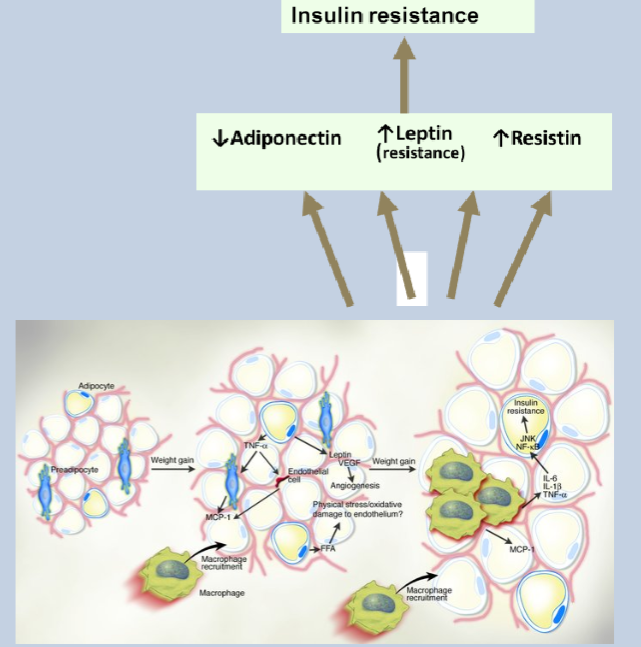
Chemokines attract macrophages to the adipose tissue.
-
What is metabolic syndrome?
A general disorder of energy metabolism associated with obesity, hypertension, hyperglycaemia (prediabetes), high serum triglycerides (but low HDL), and insulin resistance.
-
What are the key components of metabolic syndrome?
Obesity (especially visceral)
Hypertension
Hyperglycaemia (prediabetes)
High serum triglycerides (low HDL)
Insulin resistance
-
How is visceral fat different from subcutaneous fat?
Visceral (VS) and subcutaneous (SC) fat express different developmental genes and have different signaling profiles.
-
What is the significance of free fatty acids and adipocytokines released from visceral fat?
Free fatty acids and adipocytokines released from visceral fat drain directly to the liver, altering metabolism.
-
What BMI is considered obese?
A BMI greater than 30 kg/m².
-
Picture demonstrating the importance of treating obesity:
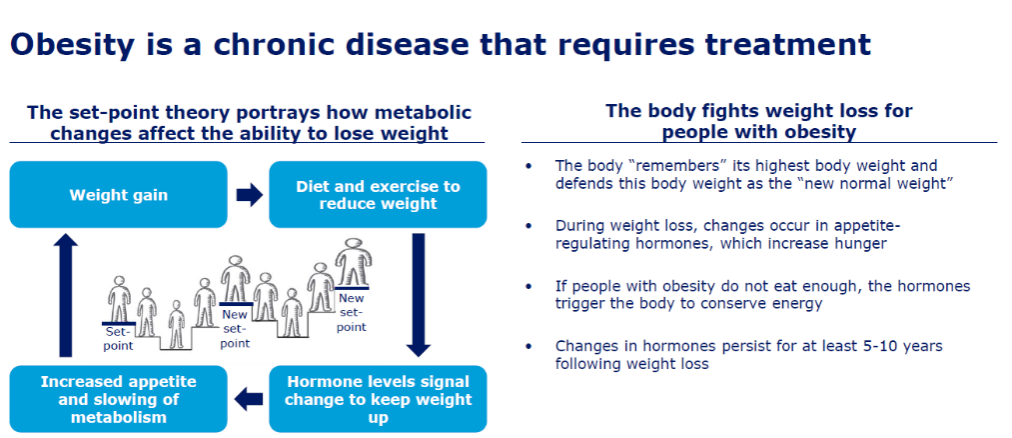
-
What is the largest endocrine gland in the body?
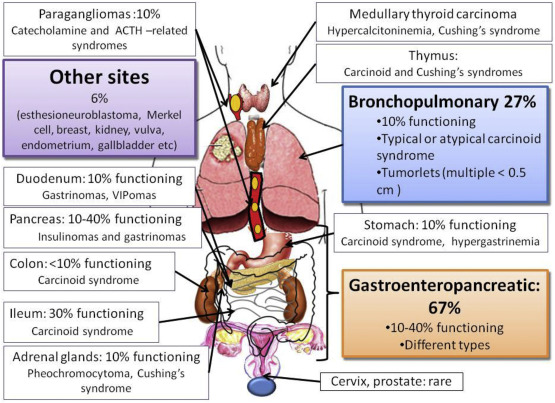
The gastroenteropancreatic tract.
-
What are incretin hormones?
Hormones that stimulate insulin secretion in response to meals. The main incretin hormones are GIP (glucose-dependent insulinotropic peptide) and GLP-1 (glucagon-like peptide 1).
-
What is the full name of GIP?
Glucose-dependent insulinotropic peptide.
-
What is the full name of GLP-1?
Glucagon-like peptide 1.
-
Major activities and stimuli for Gastrin?
Stimulates gastric acid secretion and proliferation of gastric epithelium. Triggered by peptides and amino acids in gastric lumen.
-
Major activities and stimuli for Cholecystokinin?
Stimulates pancreatic enzyme secretion and gallbladder contraction. Triggered by fatty acids and amino acids in small intestine.
-
Major activities and stimuli for Secretin?
Stimulates water and bicarbonate secretion from pancreas and bile ducts. Triggered by acidic pH in small intestine.
-
Major activities and stimuli for Ghrelin?
Stimulates appetite, feeding, and growth hormone secretion. Peaks before feeding, decreases with gastric filling
-
Major activities and stimuli for Gastric inhibitory polypeptide?
Inhibits gastric secretion/motility; potentiates insulin release. Triggered by fat and glucose in small intestine.
-
Major activities and stimuli for GLP-1?
Potentiates insulin secretion, reduces appetite. Triggered by glucose and nutrients in small intestine.
-
Picture demonstrating the regulation of food intake:
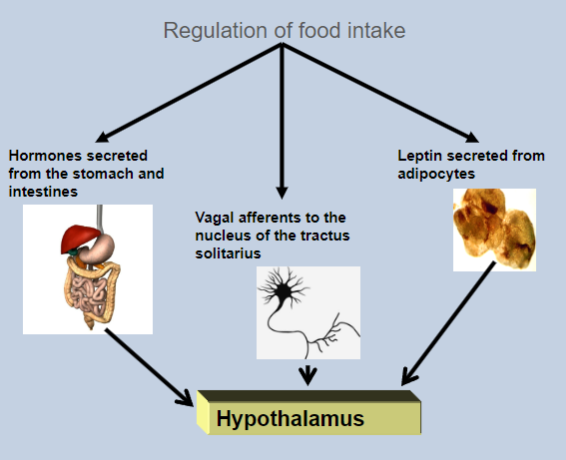
-
Picture demonstrating the Appetite inhibitory and stimulatory pathways in the hypothalamus (IMPORTANT):
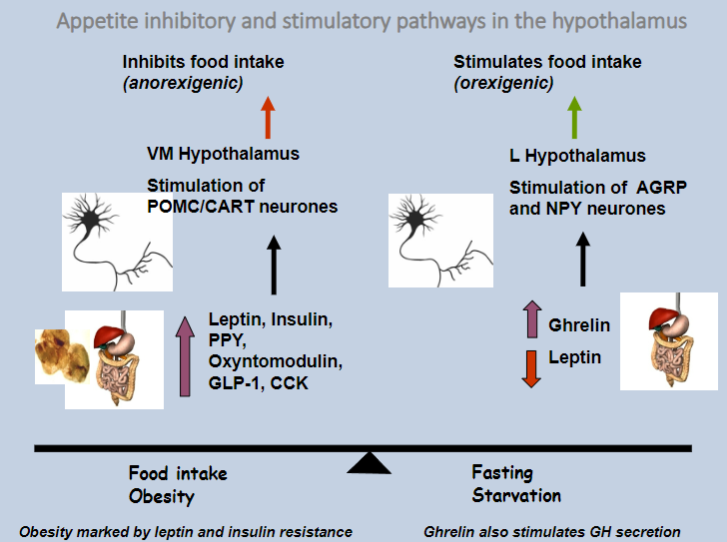
-
Picture demonstrating The evolving story of incretins (GIP and GLP‐1) in metabolic and cardiovascular disease:
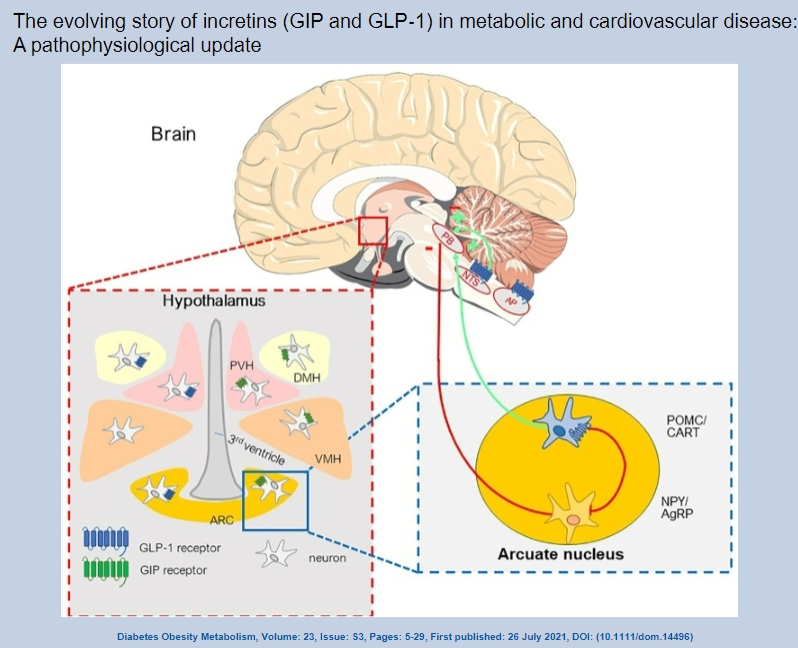
-
Name some 'non-classical' endocrine organs.
Heart, kidney, bone, tumours, pineal gland.
-
What is the endocrine function of the kidney?

Secretion of erythropoietin in response to low partial pressure of oxygen in the circulation, stimulating the production of erythrocytes.
-
How is recombinant erythropoietin (EPO) used in medicine and sports?
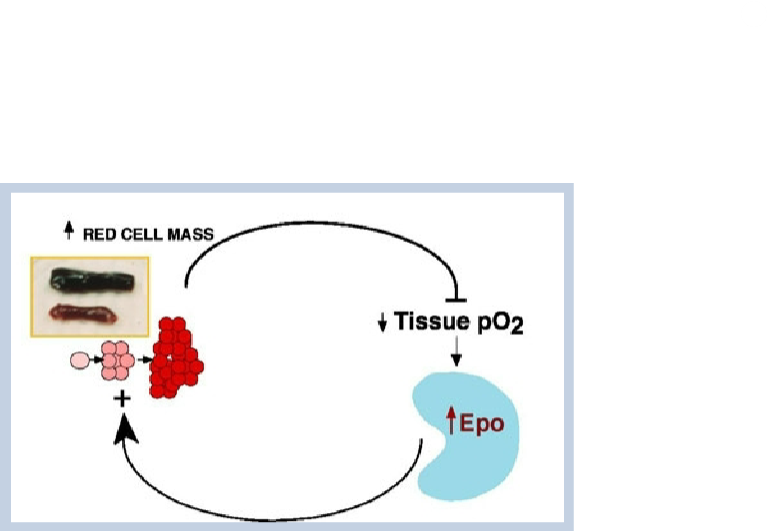
It's used to treat anaemia due to renal failure and in critical illnesses. It's also abused as a blood doping agent for endurance sports.
-
What drives circadian rhythms in organisms?
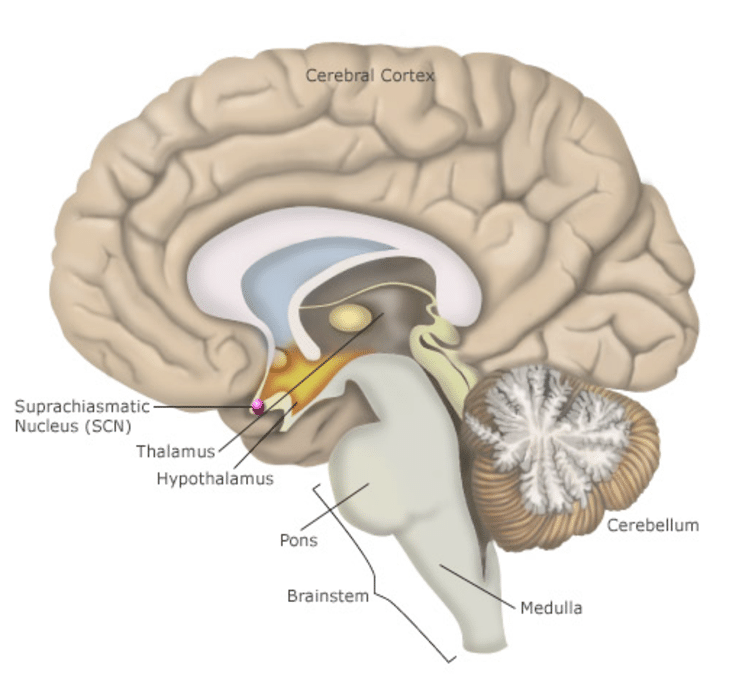
Circadian rhythms are primarily driven by the biological clock located in the suprachiasmatic nucleus.
-
Picture demonstrating Circadian rhythms - not entrained to the light dark cycle free run in excess of 24 hours:
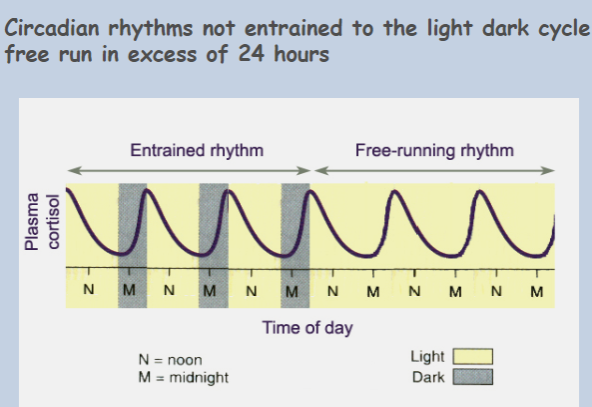
-
Picture demonstrating Rhythms driven by the suprachiasmatic nucleus (SCN):
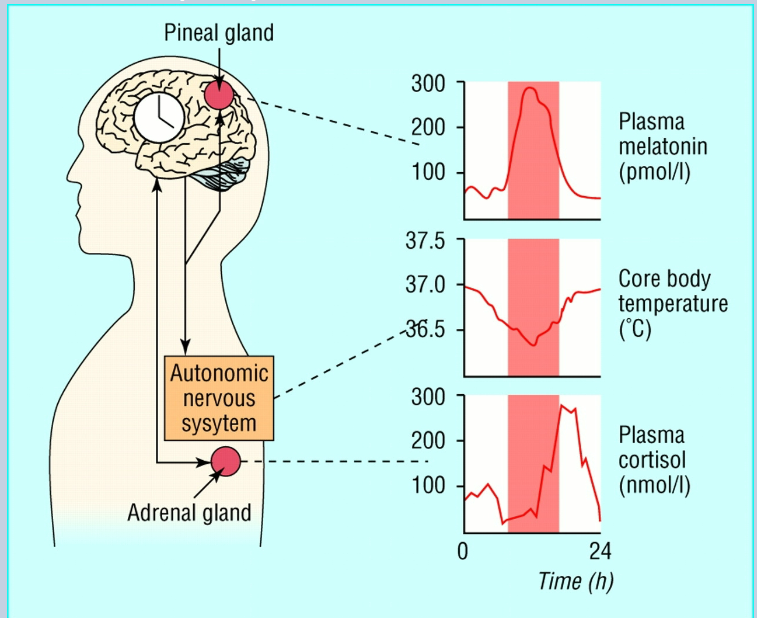
-
What are the rhythms driven by the suprachiasmatic nucleus (SCN):
Circadian Rhythms: These rhythms are primarily controlled by the SCN, influencing various physiological processes in a roughly 24-hour cycle.
Sleep-Wake Cycle: The SCN regulates the sleep-wake cycle, orchestrating periods of wakefulness and sleep in alignment with environmental cues like light and darkness.
Body Temperature: The SCN helps regulate body temperature, contributing to the daily fluctuations observed in body temperature across the day.
Hormone Secretion: Many hormones, including cortisol and melatonin, follow a circadian rhythm under the influence of the SCN.
Metabolism: The SCN influences metabolic processes, such as energy expenditure and nutrient utilization, which exhibit daily variations.
-
What neural inputs does the pineal gland receive for regulating its functions?
The pineal gland receives neural inputs from the retina, which transmit information to the suprachiasmatic nucleus (SCN) in the hypothalamus.
-
How is melatonin synthesized in the pineal gland?
Melatonin synthesis begins with the conversion of L-tryptophan to serotonin, followed by further conversion into melatonin.
-
What are some common causes of disruptions in circadian rhythms?
Jet lag, shift work, and Seasonal Affective Disorder (SAD) can all lead to disturbances in circadian rhythms.
-
What health issues have been associated with disruptions in circadian rhythms?
Epidemiological studies have linked disruptions in circadian rhythms, such as those experienced by shift workers and frequent travelers, to a higher prevalence of cancer, psychological disorders, metabolic syndrome, diabetes, and cardiovascular diseases.

